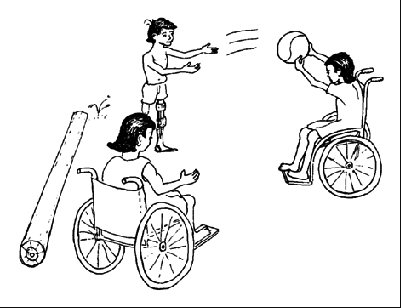Exercises For Disable is a guide for people who have been disabled and are looking to resume their lives normal life. It is a book written by Joelle C. Minkoff, which shares her experience living with diabetes and later on in her life with colon cancer. Exercises for Disable isn’t a quick fix, but it is a real and tested guide with many good and bad points. Minkoff explains in her book how exercise helped her manage diabetes and later colon cancer. Some of her favorite exercises are included in Exercises for Disable.
Finding The Best Home Exercises For The Disabled
These exercises are meant to stretch the muscles and will help you to a great extent. Stretching improves circulation and increases muscle mass. The best thing about this exercise is that it can be done at home. You don’t need to feel embarrassed about going to the Frankston NDIS. You can simply do this at the comforts of your home.
Finding The Best Home Exercises For The Disabled
You do not need special equipment for Exercises for Disabled. It is a disability support services exercise that requires only basic movements. Some exercises may need more attention than these. You should not experience pain or strain from exercises. If they do, stop immediately.
Finding The Best Home Exercises For The Disabled
Exercises For Disable are generally easy and fast and does not demand much of a time. There are some exercises you can do alone to get started. Once you have mastered these, you can begin to perform them in public. You may feel uncomfortable at first when doing these exercises in front of a lot of people but you will get used to it very soon.
Exercises For Disable require that you have patience and determination. It is unlikely that you will see immediate results. It’s a diet. You need to stick to it. Sometimes Exercises for Disabled can be frustrating. It can even be difficult.
Don’t overdo it. Take it slow. This will allow you to do the exercise more efficiently. It is best to do exercises regularly. However, if you find it difficult to stick with them for more than a week you can take a break. Remember that it all comes down to your ability and comfort level.
- Remember that Exercises for Disabled don’t have to be done every single day. You can either plan them ahead of time or just do them when you need them. You can combine different exercises into one session if you want to go further. You can also take breaks between sessions to allow your muscles to rejuvenate. You must also remember to properly cleanse your body once you have completed an exercise.
Talk to your doctor to find out which exercises are right for you. Your doctor will be able guide you better. You will notice a difference in your health when you know which ones are possible on your own and which can be assisted by a therapist.
Yoga is one of the most effective exercises. Yoga classes are available at both local studios and fitness centers. There are many yoga poses that are suitable for the disabled. Yoga requires a lot stretching, so it is great for flexibility. It can also be beneficial for the development of muscles.
Athletes have been using weights in their exercises for years. Weight training isn’t just for athletes. You could also incorporate it into a routine. This makes it a great exercise option for people with joint pain and/or difficulty moving.
You can choose to concentrate on certain areas of your body. It is possible to target specific areas of the body, such as the legs. This is because group exercises can provide a lot of cardiovascular exercise. Walking is an example of this type of exercise. Strength training can be very beneficial for the disabled, as well as cardiovascular. You can lift weights, run, or even do aerobics.
Another option is to do home-based exercises. These are ideal for those who find moving around the house difficult or are unable leave their home due to various reasons. You can also try stretching or tai chi. These are excellent exercises that are accessible to the disabled. They are also affordable.